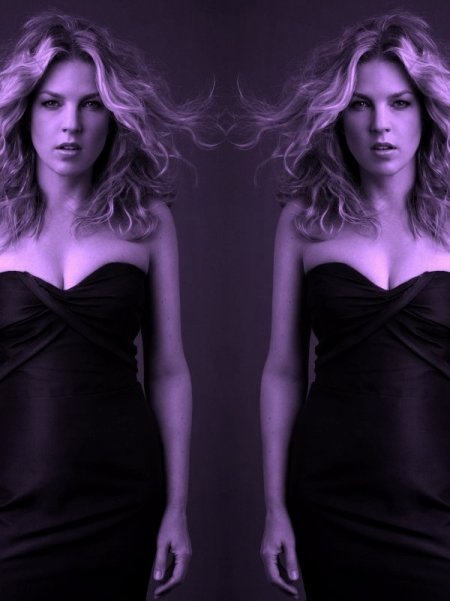(Leah Hogsten | The Salt Lake Tribune)
Piano and song work well for Krall; story-telling not so much
Review » Energetic set bogged down at times by spoken word.
By Jim Dalrymple II
The Salt Lake Tribune
First Published Sep 24 2013 11:24 pm • Last Updated Sep 25 2013 10:47 am
Two things were obvious from Diana Krall’s set Tuesday night at Kingsbury Hall: she’s an excellent musician but only a fair storyteller. Also, she really loves booze.
Krall’s set was part of a tour in support of her 2012 album "Glad Rag Doll," which is the award-winning jazz pianist’s 12th studio album.

The show began just before 8:30 p.m. with three silhouetted figures on a stage reminiscent of a Georges Mèliés film set: oversized moon, metal stars and a glowing piano.
And Steve Buscemi. Yes, he of "Boardwalk Empire" fame. Buscemi is a pleasure to watch nearly all of the time, though it was kind of an odd pairing that walked a precarious line between humor and sincerity. Was it a joke? Was it serious? It was hard to tell with Buscemi hamming it up in a video behind what seemed like a very earnest Krall and co.
Which isn’t to take away from the music, which was beyond reproach. Krall — whose breathy voice and playful piano toyed with the 1920s-themed material from "Glad Rag Doll" — was backed by a five-man band. Highlights included a surprisingly gritty cover of Tom Waits’ "Temptation" and "Let it Rain," which Krall described as the "Bridge Over Troubled Water" of its day.
As the show progressed, Krall drew laughs from the audience with anecdotes from her life. She described raising two sons and wanting to fill a bathtub with booze. Having a good drink was a recurring theme throughout the show. She described the gramophone player on the stage, revealing that it was actually her father’s. And she described growing up near her grandparents, her grandma making sandwiches and her grandfather "making books" in the back of the restaurant.
They were interesting, charming stories that painted Krall’s life as an adventurous, perpetually buzzed folk tale. But they also slowed the show down significantly, especially during the middle of the set. Long stories increasingly included long pauses and at one point she seemed almost bored as she invited shouted song requests before launching into "A Case of You" — a delightful song that was probably not well-served by the low-key chaos that preceded it.
It’s also unfortunately worth noting that when Krall switched from her grand piano to the glowing upright the sound suffered from what seemed like audio clipping or distortion. That’s not Krall’s fault of course, but really, someone should have fixed it.
Still, when Krall was playing the show was a pleasure. In addition to the Buscemi video, most songs were accompanied by vintage film clips that complemented well the silent-era-themed sets and pre-war songs. The emotion also varied considerably, jauntily rising on "Just You Just Me," for example, before tumbling back down again on the 1933 song "Boulevard of Broken Dreams."
The audience, apparently, loved it. Krall finished her set with "I’m a Little Mixed Up" but the audience compelled her back behind the piano with a standing ovation. She complied, playing an encore that included Bob Dylan’s "Wallflower" and The Band’s "Ophelia." Krall pounded them out powerfully and with pleasure, showing off exactly what she does best.
Fuente: www.sltrib.com





















































